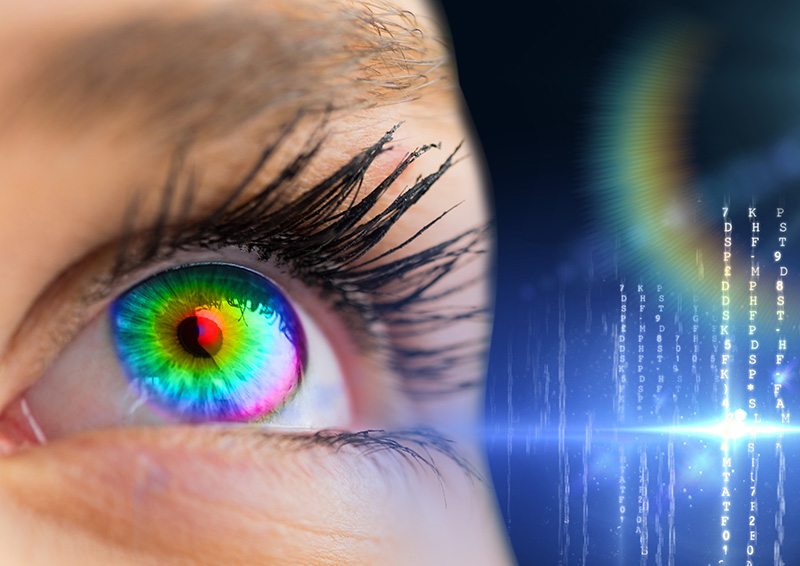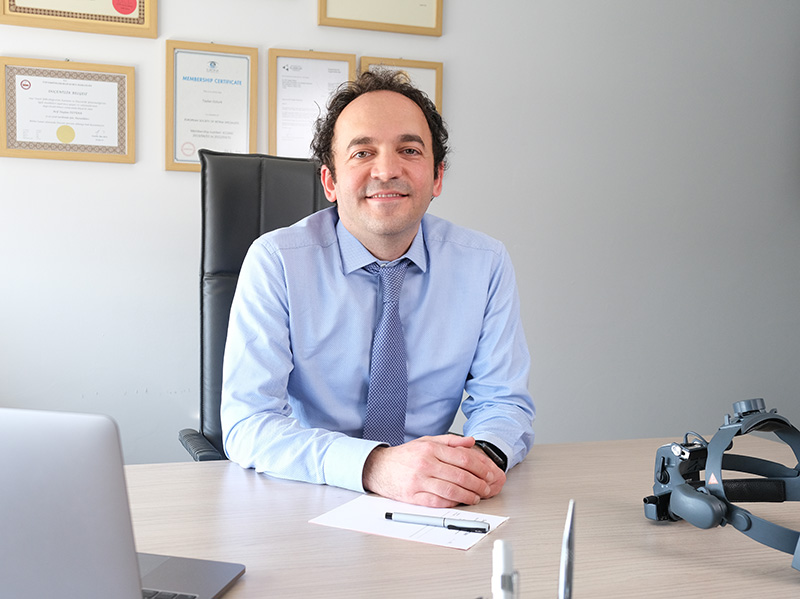Treatment of Lazy Eye Amblyopia
Dr. Taylan Öztürk

Treatment of Lazy Eye Amblyopia
What is lazy eye?
Lazy eye (amblyopia) is a condition in which one eye sees less than the other, without any structural defect in the eye or visual nerves. This condition usually occurs when there is a problem in the communication between the brain and the eye. Normally, both eyes transmit the same image to the brain and the brain combines these images. In lazy eye, however, the image from one eye is not processed well enough by the brain and the vision of that eye is weakened. If not diagnosed early, it can cause permanent vision loss.
Causes of lazy eye
Lazy eye usually occurs early in brain development. The main causes are:
Poor Vision (Refractive Errors): Uncorrected vision problems in one eye, such as myopia, hyperopia or astigmatism.
Strabismus: One eye looking in a different direction than the other.
Eyelid Problems: Problems such as a drooping upper eyelid can prevent the eye from seeing properly.
Eye Injuries: Any injury or disease of the eye.
Congenital cataracts.
Uveitis with severe involvement.
Retinal problems leading to decreased vision.
Symptoms of lazy eye
Early Symptoms
Lazy eye is often asymptomatic. Children do not realize that there is a problem with the eye that has poor vision. Parents may notice signs such as the child closing one eye, tilting their head or having difficulty seeing distant objects. Symptoms of lazy eye can be the following:
- Uneven Eyes: One eye is in a different direction than the other.
- Vision Problems: Blurred or unclear vision in one eye.
- Headaches: Headaches due to eye strain.
Progressive Symptoms
As lazy eye progresses, the symptoms become more pronounced:
- Double Vision: Overlapping images and double vision.
- Eye Fatigue: Difficulty focusing the eyes for long periods of time.
- Aesthetic Concerns: Aesthetic problems due to eye misalignment.
When to see a doctor for lazy eye?
Your child’s eyes look in different directions
If your child has difficulty seeing distant objects
If your child often rubs his or her eyes
Your child tilts his/her head or closes one eye
If your child has red or watery eyes
Diagnosis of lazy eye
Eye Examination
The diagnosis of lazy eye is made through a comprehensive eye examination. The diagnostic process includes the following:
- Vision Tests: The visual acuity of both eyes is evaluated.
- Eye Movement Tests: Movement and alignment of the eyes are examined.
- Refractive Tests: Refractive errors in the eye are evaluated.
Retinal Evaluations: It is done by dilating the pupil with medication.
Imaging Tests
Various imaging tests can be performed to determine the size and extent of lazy eye:
- OCT (Optical Coherence Tomography): Provides detailed information about the retina and structures within the eye.
- Color Fundus Photography: Photographs of the retina and the inside of the eye are taken.
Lazy Eye and the Importance of Early Diagnosis
Since lazy eye usually occurs in childhood, early diagnosis is of great importance. With early diagnosis and treatment, it is possible to prevent vision loss and ensure normal visual development.

Treatment Methods for Lazy Eye
Glasses and Lenses
Glasses and contact lenses are the main methods used to treat lazy eye. These methods can help align the eyes correctly and correct vision problems.
- Spectacles: Corrective lenses help align the eyes and improve visual acuity.
- Contact lenses: Can be used when glasses are not sufficient.
Eye Exercises
Eye exercises can help strengthen and align the eye muscles. These exercises allow the eyes to work in a coordinated way.
- Amblyopia Exercises: Exercises to improve eyesight using the weaker eye.
- Eye Muscle Strengthening: Exercises that strengthen the eye muscles and improve coordination.
Closure Treatment
Closure therapy is a method of closing the healthy eye and making the weaker eye work harder. This treatment can help improve lazy eye.
- Eye closure: Closing the healthy eye and using the weaker eye.
- Duration of Closure: The treatment process varies depending on the age of the child and the severity of lazy eye.
Surgical Intervention
Surgical intervention may be necessary in some cases to treat lazy eye. Surgical methods are used to improve the alignment of the eyes and vision.
- Strabismus Surgery: Surgical intervention by changing the position of the eye muscles.
- Eyelid Surgery: Adjustment and correction of the eyelid.
It is very important to plan cataract and retinal surgeries as early as possible in necessary cases.
Lazy Eye Treatment Process and Prices
Treatment Process
The lazy eye treatment process is usually managed with a long-term approach. The treatment process may vary depending on the methods used and the patient’s condition:
- Glasses and Lenses: Rapid improvement can be achieved, but requires regular use.
- Eye Exercises and Closure Therapy: This usually takes several months and needs to be practiced regularly.
- Surgical Intervention: Surgery can be performed depending on the cause of lazy eye. However, if lazy eye is established, it is important to provide effective treatment in childhood as the desired result cannot be achieved.
The Role of Families in the Treatment of Lazy Eye
Active participation of families in the treatment of their child increases the success of treatment. It is important to follow the treatment plan recommended by the doctor, to take the child for regular check-ups and to provide motivation during the treatment process.
Price Information and Duration of Lazy Eye Treatment
The cost of lazy eye treatment varies depending on the location of the clinic, the treatment methods used and the general health of the patient. The duration of treatment can last from a few weeks to several years, depending on the age of the patient, the type and severity of the strabismus.
The cost of lazy eye treatment may vary depending on the methods used and the treatment process:
Glasses and Lenses
Eye Exercises and Closure Therapy
Surgical Intervention It is important that the cause of lazy eye is recognized in childhood and surgical treatments are applied if necessary. Prices vary according to the type of surgery required.
Lazy Eye and Quality of Life
If left untreated, lazy eye can lead to problems in many areas such as school success, social relationships and activities of daily living.
How can we help you with lazy eye?
Your child’s eye health is very important for their future. Lazy eye is a condition that can be completely reversible with early diagnosis and treatment. If you see signs of lazy eye in your child, consult an ophthalmologist immediately.
As Dr. Taylan Öztürk, we offer you the best service with our expert team in the treatment of lazy eye.
Contact us immediately to make an appointment!
We Care About Your Eye Health! Contact us immediately to get detailed information about lazy eye treatment and to get professional support. Contact us for a healthy eye and clear vision!